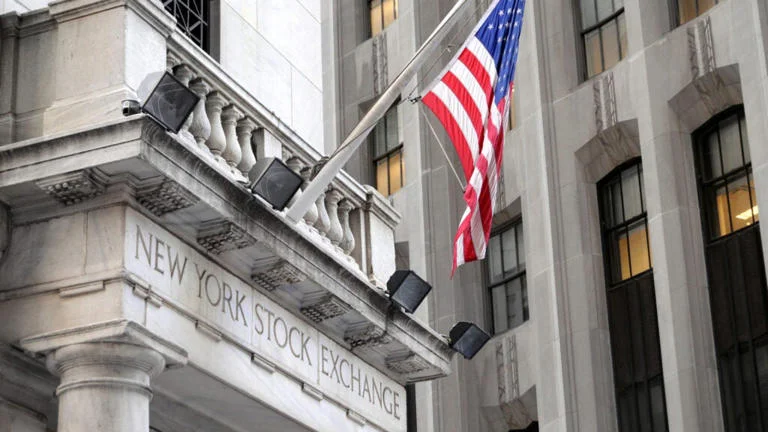The Anatomy of a Contradictory Rally
The S&P 500 just closed out its best week since August. On the surface, it was a week of renewed confidence, a collective exhale after a period of volatility. You could almost hear the sigh of relief through the ticker tape as the Dow climbed 238 points and the VIX, that skittish measure of market fear, retreated from its recent highs. The pre-market screens on Thursday morning glowed with a uniform green, futures across the board ticking higher in a quiet, orderly consensus. Stock Market News From Oct. 17, 2025: S&P 500 Marks Best Week Since August; Dow, Nasdaq Rise; Oracle, Nvidia, Micron, Zions Bancorp, More Movers; Bank Loan Fears
This is the narrative you'll read in most summaries: Geopolitical tensions eased, strong earnings from select companies provided a lift, and the bull market took another confident stride forward. It’s a clean, simple story. And from my perspective, it’s dangerously incomplete. When you peel back the headline numbers, you find a rally built on a foundation that looks less like solid bedrock and more like shifting sand. The market seems to be celebrating a future that the underlying data simply doesn't support.
The primary catalyst for the week's optimism appears to be a single source: comments from President Trump suggesting a meeting with China’s Xi Jinping was still on track. Futures, which had been wavering, immediately trimmed their losses on the news. S&P 500 futures pare declines after Trump's comments on China. This tells us the market is reacting not to fundamental strength, but to sentiment—to the hope of a resolution. We saw this optimism reflected in individual names. Salesforce, for instance, jumped nearly 7%—not on current results, but on a projected revenue goal of over $60 billion by fiscal year 2030. J.B. Hunt Transport surged over 14% on an earnings beat. These are the stories that fuel a bull run. But are they the whole story?
A Disconnect in the Data
While the indices were climbing, a different, more troubling set of numbers was being released. The Philadelphia Fed’s general business activity index didn’t just decline; it plunged 36 points into negative territory, settling at -12.8, its lowest reading since April. That’s not a soft landing; it's a nosedive. The report was mixed, with new orders rising slightly, but the headline figure points to a sharp contraction in manufacturing activity in a key region. How does the market square that circle?

Then there’s the Federal Reserve’s own Beige Book report, which explicitly stated that tariffs are translating into higher costs for businesses, with the burden "increasingly being passed on to consumers." This isn't a forecast; it's an observation of current economic reality. I've looked at hundreds of these reports over the years, and this kind of direct language about cost pass-through is a clear signal of inflationary pressure and margin compression down the line.
We saw a perfect microcosm of this dynamic in Hewlett Packard Enterprise’s performance. The company posted record revenue, a fantastic headline driven by AI demand. The stock, however, tumbled almost 9%. Why? Because strategic restructuring costs compressed its profit margins. This is the Beige Book warning in action. The market is celebrating the top-line revenue growth of companies like Salesforce while seemingly ignoring the bottom-line margin pressure facing companies like HPE. It’s like admiring the speed of a car without checking if it’s about to run out of gas. A rally driven by revenue growth in a high-cost environment is, by definition, a fragile one. Is it possible the market is simply choosing to ignore margin erosion as long as the growth story remains intact? Or is this a classic case of irrational exuberance, where good news is magnified and bad news is dismissed?
The analysis from major firms only adds to this strange dichotomy. BlackRock, for instance, remains overweight on U.S. equities, dismissing concerns about the dollar and seeing potential Fed rate cuts as a tailwind for stocks. They argue that rate cuts without a recession should support the market. This is the institutional bull case in a nutshell. Yet, at the same time, we have commentary from Citi’s Scott Chronert pointing to a "credit kerfuffle" and defaults in private and bank loan markets. He notes that good bank results have been "overshadowed" by these credit events. It's a reminder that risk is bubbling just beneath the surface, even as the major indices post gains.
The Signal and the Noise
So, what are we left with? A market that rallied to its best week in months, driven largely by a positive turn in trade rhetoric and a few strong earnings reports. But this rally occurred against a backdrop of sharply contracting manufacturing data, explicit warnings from the Fed about tariff costs, and visible signs of margin compression and credit stress. The divergence is stark. The market is listening to the optimistic pronouncements of CEOs and politicians while the economic data is quietly sounding an alarm. This isn't a rally based on a robust, synchronized recovery. It feels more like a bet—a highly leveraged bet that the promise of Fed rate cuts and a China deal will be enough to paper over the very real cracks forming in the foundation.
